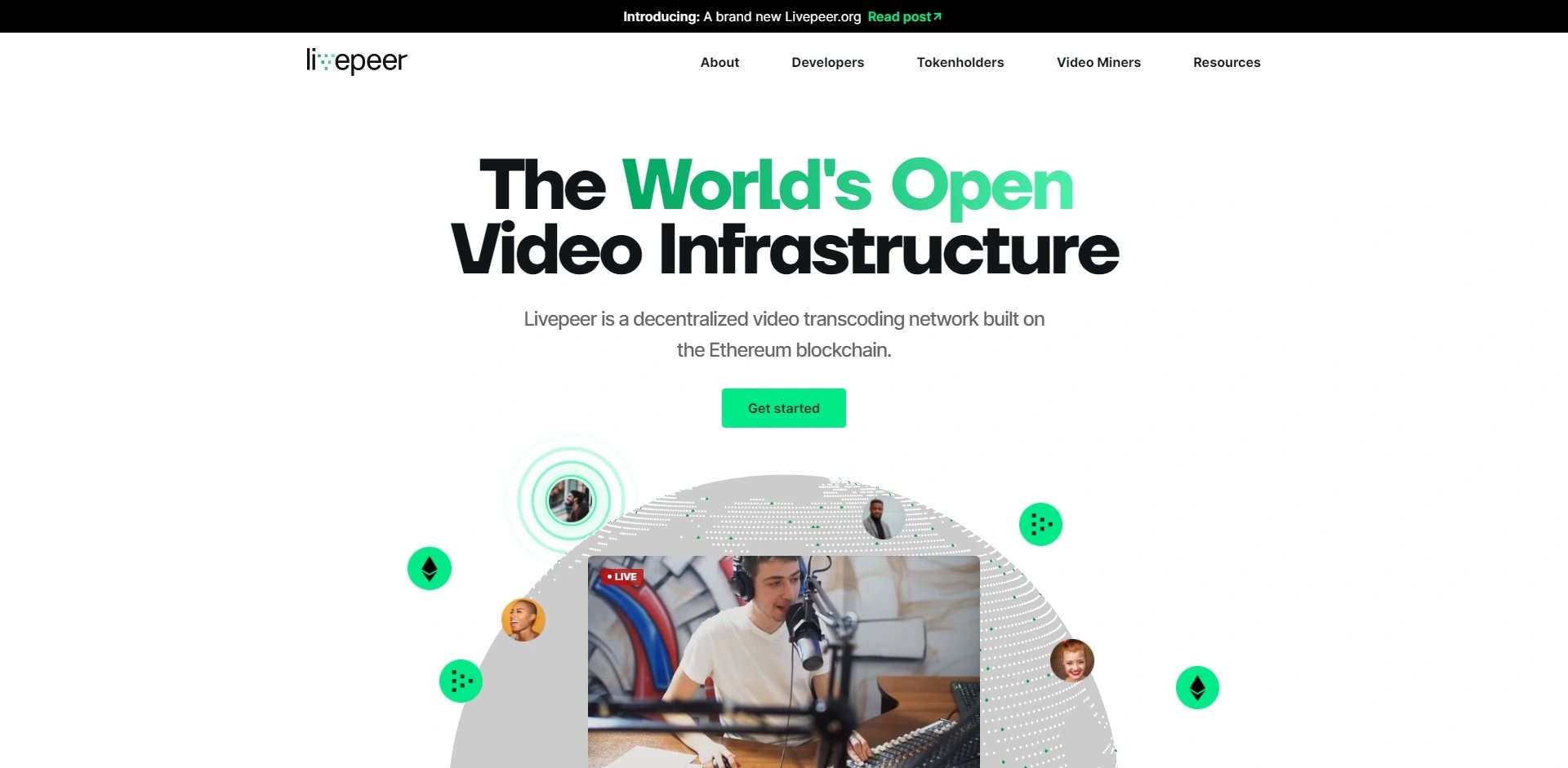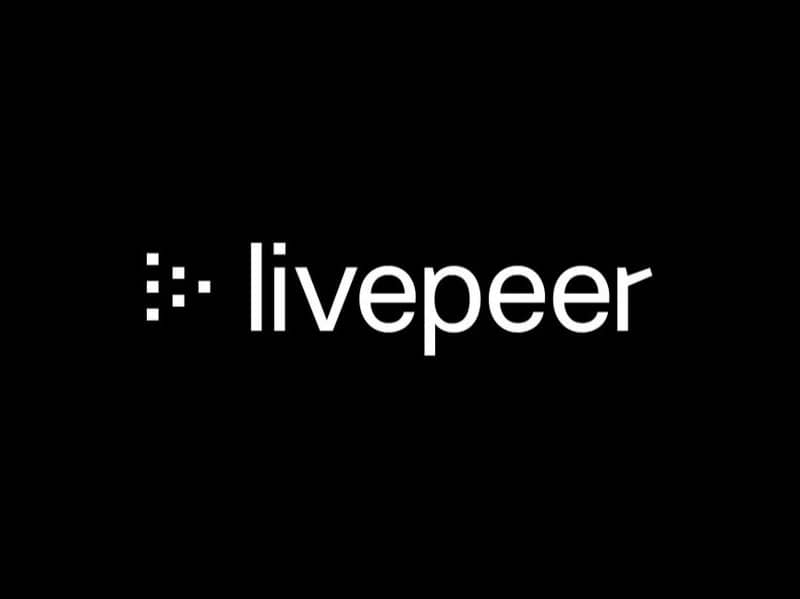위키 구독하기
Share wiki
Bookmark
Livepeer
Livepeer
Livepeer(라이브피어)는 블록체인 기반의 분산형 실시간 스트리밍 플랫폼입니다. LPT는 인터넷 상에서 분산형 실시간 동영상 방송을 위한 플랫폼입니다. 블록체인 기반 암호 토큰 프로토콜과 견고한 경제적 인센티브, 그리고 개방형 미디어 서버를 결합하여 Livepeer는 기존 플랫폼보다 저렴하고 확장성이 뛰어나며 더욱 분산된 방송 솔루션을 제공하고자 합니다.[1][2]
개요
Livepeer는 완전히 분산형이며 확장성이 뛰어나고 암호 토큰으로 인센티브가 제공되는 실시간 동영상 스트리밍 네트워크 프로토콜로, 기존의 중앙 집중식 실시간 동영상 솔루션보다 앱 개발자나 방송사에게 더 저렴한 솔루션을 제공합니다. Livepeer 프로토콜에 참여하는 사용자는 다음과 같은 역할 중 하나를 수행합니다.
- 오케스트레이터(Orchestrator): 오케스트레이터는 프로토콜을 인식하고, 지능적이며, 24시간 작동하는 프로세스로, 네트워크의 최종 사용자에게 트랜스코딩 작업이 올바르게 수행되도록 책임을 집니다.
- 트랜스코더(Transcoder): 트랜스코더는 비디오의 입력 세그먼트를 가져와 원하는 결과로 트랜스코딩하는 방법을 아는 간단한 프로세스입니다.
- 방송사(Broadcaster): 방송사는 Livepeer 네트워크의 수요 측면을 충족하는 프로토콜 인식 프로세스로, 노출된 RTMP 인터페이스에서 최종 사용자로부터 입력 스트림을 가져와 Livepeer에서 실행되는 인프라 제공업체가 트랜스코딩하도록 합니다.

Livepeer 프로젝트는 실시간 동영상 방송을 위한 암호 경제적으로 인센티브가 제공되는 프로토콜과 개방형 미디어 서버를 제공하고자 합니다. 이를 위해 Livepeer는 이더리움 블록체인으로 보호되는 시장을 통해 상호 작용하는 피어투피어 인프라를 구축하고 있습니다.
Livepeer는 오픈소스 코드와 다양한 관심사와 기술을 가진 사람들의 창의적인 기여를 믿는 오픈 프로젝트입니다.[3][4]
Livepeer 토큰
Livepeer 토큰(LPT)은 Livepeer 네트워크의 프로토콜 토큰입니다. 하지만 교환 토큰의 매개체는 아닙니다. 방송사는 네트워크에서 동영상을 방송하기 위해 이더리움의 이더(ETH)를 사용합니다. 처리 및 대역폭에 기여하는 노드는 방송사로부터 수수료 형태로 ETH를 얻습니다.
LPT는 네트워크에서 작업을 수행하려는 참여자가 작업이 네트워크에 어떻게 분산되는지 조정하고 작업이 정직하고 정확하게 완료되도록 보안을 제공하기 위해 스테이킹하는 스테이킹 토큰입니다.
LPT는 다음과 같은 목적을 가지고 있습니다.
- 위임 지분 증명 시스템에서 본딩 메커니즘 역할을 합니다. 여기서 지분은 동영상을 트랜스코딩하고 작업을 검증하는 프로토콜에 참여하는 트랜스코더(또는 검증자)에게 위임됩니다. 프로토콜 위반으로 인해 발생하는 토큰 및 잠재적인 슬래싱은 다양한 공격으로부터 네트워크를 보호하는 데 필요합니다.
- 스테이킹 및 위임된 토큰의 양에 비례하여 네트워크를 통해 작업을 라우팅하여 본질적으로 조정 메커니즘 역할을 합니다.
- Livepeer 생태계에 특정한 계정 단위로, 향후 도입될 추가 기능에 적용 가능한 SectorCoin 개념의 기반을 형성합니다.
프로토콜 역할
Livepeer 프로토콜은 실시간 스트리밍 생태계의 다양한 행위자가 안전하고 경제적으로 합리적인 방식으로 참여하는 방법을 정의합니다. 프로토콜이 해결해야 할 두 가지 주요 영역은 소스에서 많은 소비자에게 실시간 동영상을 성능이 뛰어나고 확장 가능한 방식으로 실제로 배포하는 것과 네트워크 참여를 안전하고 게임 이론적인 방식으로 장려하기 위한 경제적 인센티브입니다.
Livepeer 노드는 Livepeer 소프트웨어를 실행하는 모든 컴퓨터입니다.
| 노드 역할 | 설명 |
|---|---|
| 방송사 | 원본 스트림을 게시하는 Livepeer 노드 |
| 트랜스코더 | 스트림을 다른 코덱, 비트 전송률 또는 패키징 형식으로 트랜스코딩하는 작업을 수행하는 Livepeer 노드 |
| 릴레이 노드 | 실시간 동영상 배포 및 프로토콜 메시지 전달에 참여하지만 트랜스코딩을 수행하지 않는 Livepeer 노드 |
| 소비자 | 스트림을 요청하는 Livepeer 노드로, 스트림을 보거나 게이트웨이를 통해 앱 또는 DApp 사용자에게 제공할 가능성이 높습니다. |
| 시스템 역할 | 설명 |
|---|---|
| 스웜 | 콘텐츠 주소 지정 스토리지 플랫폼. SWEAR 프로토콜을 통해 검증 프로세스 중에 데이터를 일시적으로 사용할 수 있다는 것을 보장할 수 있습니다. |
| Livepeer 스마트 계약 | 이더리움 네트워크에서 실행되는 스마트 계약 |
| Truebit | 체인에 배치된 계산의 정확성을 보장하는 블랙박스 검증 프로토콜(높은 비용으로) |
잘못된 내용이 있나요?
